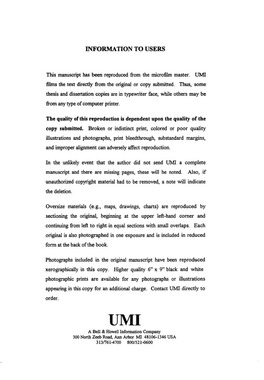| dc.contributor.author | Noggle, Gary Alan. | en_US |
| dc.date.accessioned | 2013-08-16T12:29:30Z | |
| dc.date.available | 2013-08-16T12:29:30Z | |
| dc.date.issued | 1997 | en_US |
| dc.identifier.uri | https://hdl.handle.net/11244/5416 | |
| dc.description.abstract | This research advances the argument that technology can be used to influence the meaning being drawn by the viewer from the video image. Although using technologically distorted images or not played little significance in initiating differing opinions about the ads themselves, it always played a significant role when judging the candidates featured within the ads. Using distortion made the candidates in the positive ads always seem much more positive and the candidates featured in the negative ads seem much more negative. The sponsor in the negative ads always appeared to be much more positive when distorted images were used to displace his/her opponent. | en_US |
| dc.description.abstract | The instrument also incorporates a relatively new field of study, "media literacy, " as a way to account for response variance and to determine whether or not the American people are visually sophisticated enough not to be duped by the "tricks of technology" now at the disposal of political communicators. The more video "literate" the respondents are, the more "immune" they are assumed to be to the positive or negative influence that the distorted ads are intended to have. In other words, a higher "literacy" score should correspond to a lower respondent evaluation for the positive ads and a higher evaluation for the negative ads. This highly publicized and sustained notion was not supported by this study. | en_US |
| dc.description.abstract | Differing ethical standards within political communication are explored to determine a basis for questioning the use of video technology and distortion strategies within political advertising. The effects that these modern video and audio distortion technologies might have on the message are addressed by exploring historic and analytic research in relevant fields of study. The study creates and orchestrates an instrument for determining the effect that such "technological distortion" has on the informed electorate, ending with an analysis of the data gathered from a pilot lab study which uses the designed instrument. | en_US |
| dc.format.extent | v, 163 leaves : | en_US |
| dc.subject | Advertising, Political United States. | en_US |
| dc.subject | Psychology, Cognitive. | en_US |
| dc.subject | Political Science, General. | en_US |
| dc.subject | Mass Communications. | en_US |
| dc.subject | Business Administration, Marketing. | en_US |
| dc.subject | Mass media United States Psychological aspects. | en_US |
| dc.subject | Manipulative behavior United States. | en_US |
| dc.subject | Visual literacy United States. | en_US |
| dc.title | The effects of technological distortion and visual "literacy" in political advertising / | en_US |
| dc.type | Thesis | en_US |
| dc.thesis.degree | Ph.D. | en_US |
| dc.thesis.degreeDiscipline | Department of Communication | en_US |
| dc.note | Source: Dissertation Abstracts International, Volume: 57-11, Section: A, page: 4583. | en_US |
| ou.identifier | (UMI)AAI9712660 | en_US |
| ou.group | College of Arts and Sciences::Department of Communication | |
